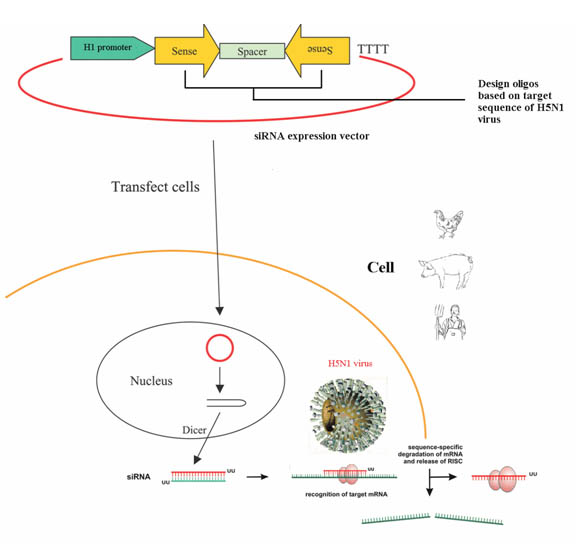In collaboration with Department of Biological Sciences and Biotechnology in Tsinghua University, Professor Hong-Xuan He and his team of National Research Center for Wildlife Diseases in IOZ, published a new paper entitled RNA interference of avian influenza virus H5N1 by inhibiting viral mRNA with siRNA expression plasmids (Journal of Biotechnology, 2008 Jun 1; 135(2): 140-144). They transformed siRNAs into mammalian cells and chicken embryos. This research indicated that reproduction of H5N1 avian influenza virus and expression of viral protein were inhibited by siRNAs.
According to the comment of Science News on April 28th, 2008, Professor He and his team “built on previous work that used RNA interference to disrupt reproduction of other kinds of flu virus. In most of the earlier research, harmless adenoviruses instead of DNA rings carried the siRNAs into the animals’ cells. People's immune systems can often destroy adenoviruses, which could defeat potential therapies. The DNA rings, called plasmids, avoid this problem and can be mass produced cheaply by using bacteria to churn out copies.”
"The researchers identified a part of the avian flu?virus genome that is nearly identical among the virus's many mutant strains. By designing the plasmid to target that segment of genetic code, the researchers hoped to ensure that the plasmid would work against the many variants of avian flu."
Herman Eisen, an MIT virologist who has performed similar research for other flu viruses, also expressed concern about this achievement. He said, “The approach is well worth pushing. The hold up is being able to deliver it. Like any kind of gene therapy, it's very difficult.”


